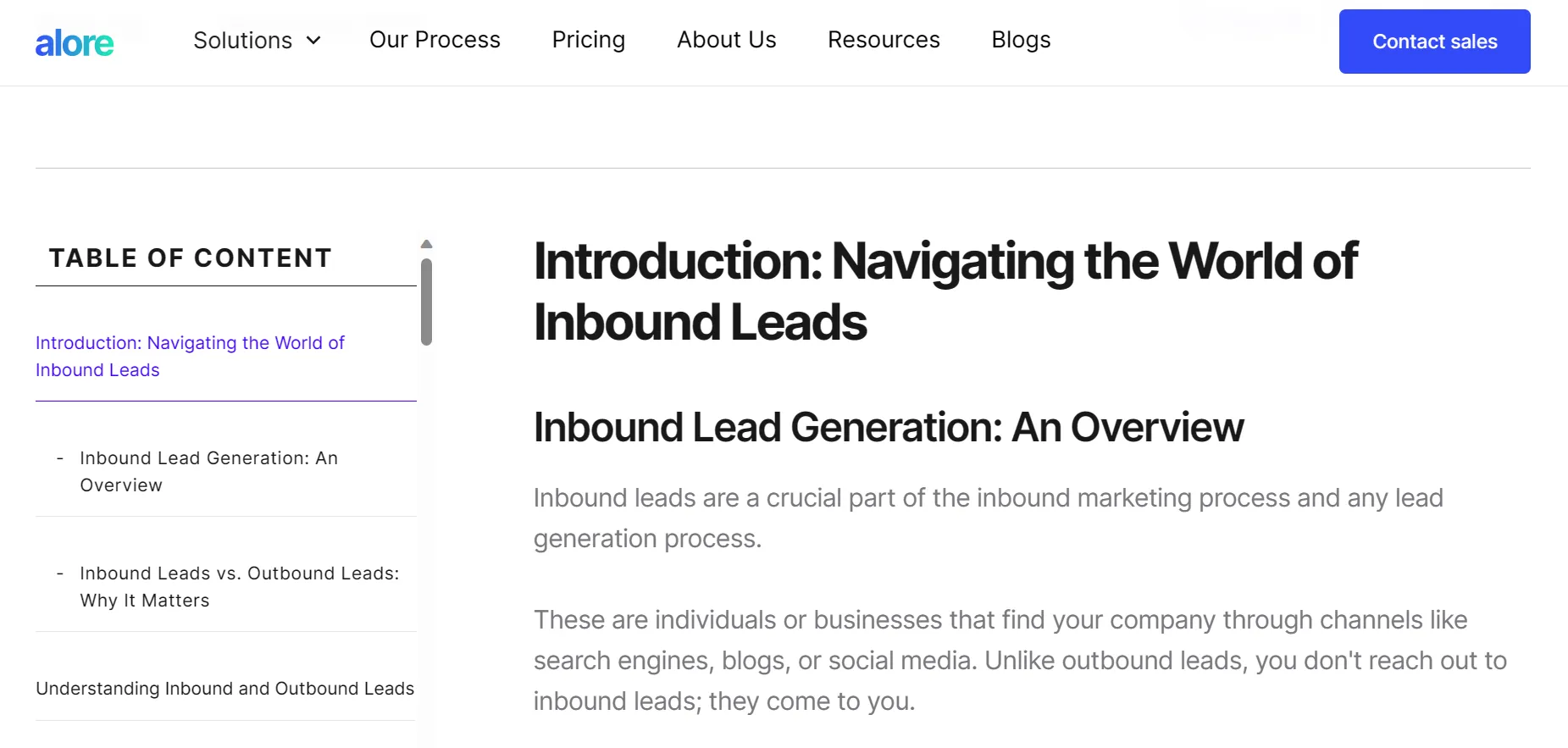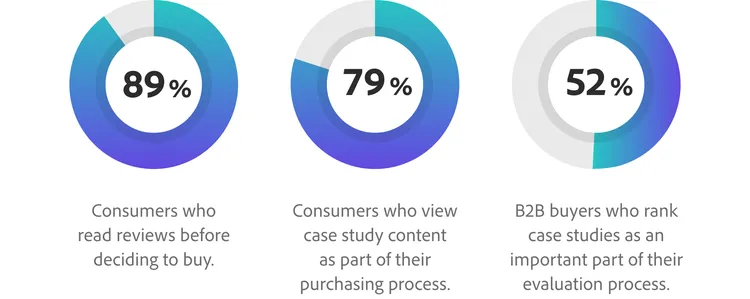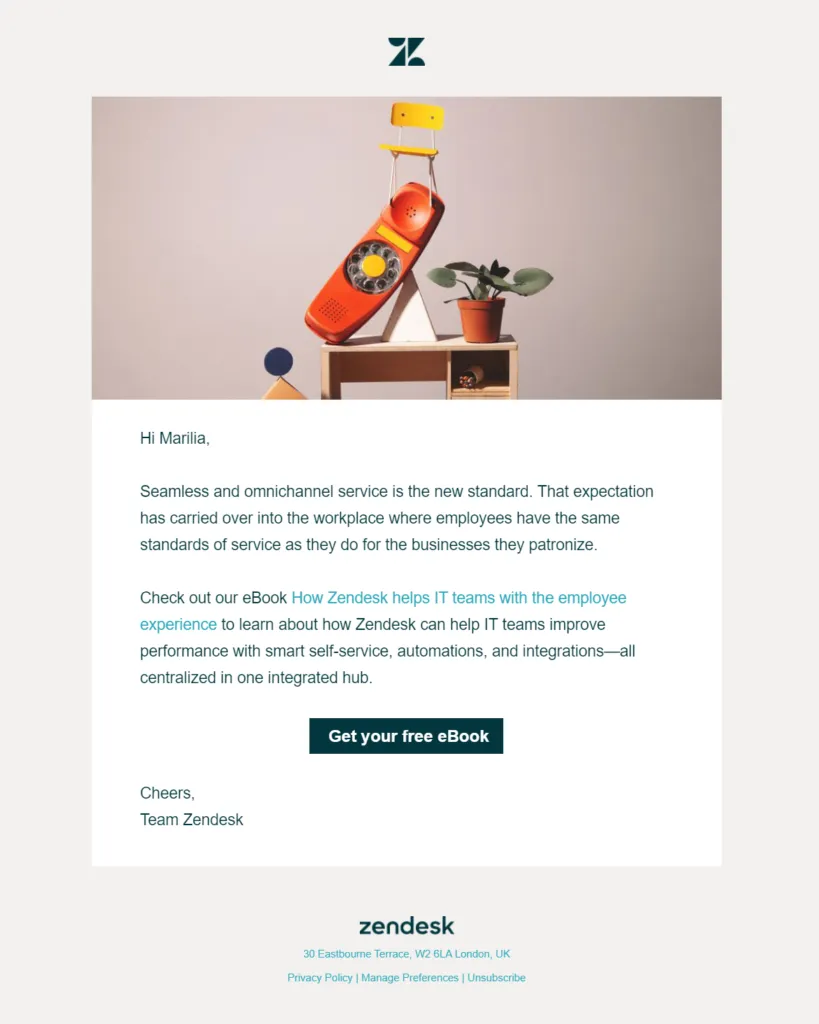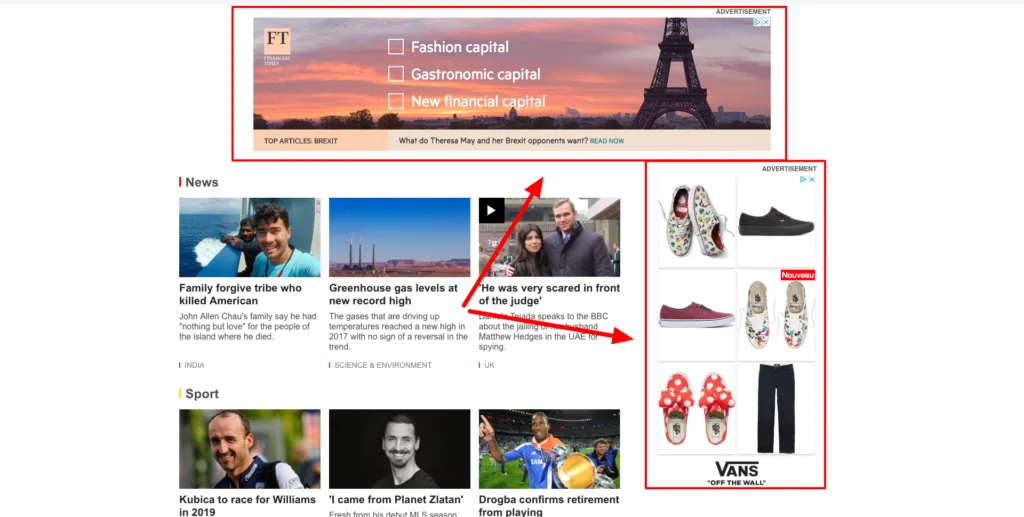Introduction to Lead Generation
What is a Lead?

Before we dive into exploring how lead generation works in sales, it's important to understand – what exactly is a lead?
Simply put, a lead represents a potential future customer for a business.
A qualified lead in the context of sales and marketing is a potential customer who has shown interest in your product or service.
It refers to any individual or organization that has expressed interest in a company's products or services, thereby signaling sales potential.
This term signifies more than contact information; it represents the beginning or initial step in the journey toward making a sale, necessitating careful nurturing.
Exploring Lead Generation in Sales: A Key to Business Growth
The concept of lead generation lies at the very heart of the sales process.
It refers to the strategies and systems implemented for attracting prospective buyers and converting them into tangible opportunities. In fact, lead generation has been described as the lifeblood of sales teams.
Without securing high-quality, qualified sales leads on a consistent basis, companies struggle to initiate sales conversations and nurture interest along the sales funnel.
Stats highlight that companies that prioritize lead generation through dedicated tools, multiple channels, and aligning sales and marketing can scale up to 2.3x faster.
The metrics speak for themselves – the more leads you generate, the more revenue you produce.
The Lead Generation Process: Foundation for Successful Sales Teams


Constructing an effective system for securing and qualifying leads is vital for sales teams aiming to improve lead quality and boost conversions.
Why It's Critical:
The lead generation process is more than just a preliminary step in sales; it's the foundation upon which successful sales teams are built. This criticality stems from several factors:
- Filling the Sales Pipeline: A robust pipeline is essential for consistent sales success. Lead generation populates this pipeline with potential customers, ensuring a steady flow of opportunities.
- Targeting the Right Audience: Effective lead generation hinges on identifying and reaching the right target audience. This precision targeting prevents resources from being wasted on uninterested parties.
- Enhancing Sales Efficiency: By prioritizing high-quality leads, sales teams can focus their efforts more effectively, increasing the chances of conversion and improving overall efficiency.
The key aspects of such lead generation processes include the following:
Defining Target Leads: Sales teams need to partner closely with the marketing team to identify and specify their ideal customer profiles based on buyer personas, demographics, firmographic data etc. This forms the preliminary foundation.
Implementing Marketing Strategies: With target audiences defined, inbound marketing techniques like content creation and SEO and outbound tactics like lead list building and cold calling can be leveraged across channels to attract potential leads.
Lead Capture and Management: As interest is generated among prospects, they need to be captured as leads before being scored and tracked within CRM systems to nurture them toward a sale. Things like lead magnets and landing pages facilitate this.
Constructing such systems requires sales professionals to continually improvise using testing, data, and analytics at every stage.
With the right strategies, even lean sales teams can build foundations for current sales rep, and future success.
Understanding Different Leads
Decoding Lead Types: From Marketing Qualified Leads (MQLs) to Sales Qualified Leads (SQLs)

To develop effective lead generation in sales strategies, it’s vital first to decode the different types of leads that enter the sales pipeline.
As prospects interact with marketing content and campaigns, they get qualified into different lead categories based on their level of interest and sales readiness.
Marketing Qualified Leads (MQLs) refer to prospects who match a business’ buyer persona and have shown interest by engaging with blogs, resource downloads, email nurturing content, etc. They comprehend the core challenges a product/service addresses but may need further nurturing.
Sales Qualified Leads (SQLs) take it a step further by initiating conversations with sales teams, whether via inquiries, demos, or trials. They have spelled out their needs/pain points and sales reps are actively evaluating solutions. SQLs stand primed for targeted sales pitches.
In between lies Product Qualified Leads (PQLs) - prospects who have shown intent by signing up for extended trials or free samples. They have experienced the solution and require final nurturing to make purchase considerations.
Scoring models tracking prospect engagement across stages help sales teams identify where leads stand in their buyer’s journey and guide follow-up accordingly.
The Role of Qualified Leads in Effective Lead Generation Strategies
The significance of qualified leads in lead generation strategies cannot be overstated. They are the pulse of your sales pipeline, the potential customers who are most likely to convert into sales, and thus, the primary target of your lead generation efforts.
Why Qualified Leads Matter:
- Higher Conversion Rates: Qualified leads, like MQLs and SQLs, have a higher probability of converting into actual sales, making them a goldmine for sales teams.
- Efficient Use of Resources: Focusing on these leads ensures that the sales team's time and the company's resources are utilized on prospects with the highest conversion potential.
- Better Customer Understanding: By analyzing the journey of qualified leads, you can gain insights into the needs and preferences of your target audience, refining your lead generation strategies.
How to Nurture Qualified Leads:
- Tailored Communication: Use data from lead generation tools and customer interactions to personalize communication. This could mean sending targeted emails that address the specific needs of your potential customers.
- Educational Content: Provide valuable information that addresses their pain points. Content marketing plays a significant role here, offering insights and solutions relevant to their stage in the buyer's journey.
- Regular Engagement: Keep your brand at the top of their mind. Whether it's through social media marketing or follow-up calls, regular engagement is key to converting MQLs into SQLs and eventually, customers.
A successful lead generation strategy isn't just about attracting a high volume of leads but about attracting the right kind and nurturing them effectively.
Lead Generation Strategies and Processes
The Art of Generating Leads: A Strategic Overview
Effective lead generation in sales is a nuanced process that hinges on understanding and implementing a range of strategies to connect with your target audience.
Identifying potential customers is the first step. This involves understanding their needs and preferences and how your product or service can meet those needs.
Incorporating strategies like search engine optimization (SEO) can boost your visibility in search engine results, drawing in more leads. Similarly, engaging in social media marketing on platforms where your target audience is active can significantly increase your lead generation success.
Another crucial aspect is the use of quality lead generation tools.
This ranges from online lead generation tactics to utilizing lead generation companies for a wider reach. A combination of direct approaches like cold calling and indirect methods like content marketing can effectively generate leads.
Lead Generation Tools and Techniques: Maximizing Potential Customers
A strategic application of various lead generation tools is essential to maximize potential customers. This includes:
- CRM Systems: For efficient tracking and management of lead interactions.
- Lead Capture Forms: Deployed on websites to gather information from visitors, feeding into your sales funnel.
- Lead Management Software: These tools help in organizing and nurturing leads more effectively.
- Alore.io: An AI-driven platform that automates several aspects of lead generation, targeting potential customers more efficiently.
Lead Generation Methods
Content Marketing Strategies
Content marketing is a crucial part of lead generation in both sales and marketing teams, offering a range of methods to engage and attract potential customers. Let's explore some effective strategies:
Blog Posts

Blog posts are a fundamental tool in content marketing.
They serve as a platform to answer common questions, share knowledge, and provide useful information to your target audience.
Integrating SEO techniques enhances your blog's visibility and attracts more traffic. Each post should deliver value, address problems, offer guidance, or share industry insights.
Providing informative and relevant content establishes your authority and trustworthiness, which encourages readers to explore your products or services.
Infographics

Infographics are effective for presenting data or complex information in a visually engaging format. For example, an infographic about 'lead generation strategies' can illustrate all the leads and process from prospect to customer or outline various tactics.
Their visual appeal makes them suitable for sharing on social media, boosting your online marketing efforts.
The combination of visual appeal and simplified information makes it easier for potential leads to understand and retain your message, leading to increased engagement.
Case Studies

Case studies demonstrate how your product or service has helped other clients. They offer real-world examples of your success, showing how you've met specific challenges or contributed to business growth. This approach can be very persuasive, showcasing your expertise and the results you can achieve.
Prospective leads are more likely to engage with your brand when they see tangible evidence of your effectiveness in addressing similar challenges or goals.
Videos

Videos are an increasingly important tool in digital marketing. They provide a dynamic way to engage your audience through explanatory content, customer testimonials, or showcasing your products or services. Videos offer an interactive experience, potentially making a stronger impact than text or images.
The engaging and often entertaining format of videos can effectively capture attention and convey your message, leading to higher interaction and interest in your brand.
Email Marketing Tactics
Drip Campaigns
Drip campaigns, a form of automated online lead generation, effectively nurture leads by providing a series of targeted emails. They are crucial for any lead generation campaign as they keep your brand at the forefront of potential customers' minds.
By consistently providing valuable content and offers tailored to each stage in the buyer's journey, drip campaigns maintain engagement, gradually guiding leads to a purchase decision.

Promotional Emails
Promotional emails are a direct and impactful lead generation tool, offering special deals or exclusive content. They are particularly effective in the 'lead generation strategy' for e-commerce businesses, where immediate action is often encouraged.
The success of promotional emails lies in their ability to create a sense of urgency and exclusivity, prompting quick engagement and conversions.

Retargeting Campaigns
Retargeting campaigns in email marketing, essential for 'effective lead generation', target users who have shown interest inbound leads but haven’t converted. These campaigns are a form of 'lead generation efforts', bringing leads back into the sales funnel.
By reminding leads of their previous interest and offering personalized incentives, retargeting campaigns effectively rekindle interest and nudge leads toward conversion.

Paid Advertising Channels
Search Engine Marketing
Search engine marketing (SEM) plays a pivotal role in lead generation by placing your business at the forefront when potential customers search for related products or services.
This method is especially effective for reaching users actively searching for solutions, thereby increasing the likelihood of lead conversion.
By leveraging search engine optimization (SEO) and paid advertising like PPC (pay-per-click), SEM ensures your brand appears prominently on search engine results pages, driving targeted traffic and generating leads.

Social Media Ads
Social media ads are key to a successful lead generation strategy, particularly when targeting a specific audience. These ads can effectively generate leads by tapping into a vast user base and engaging them with compelling, personalized content.
Platforms like Facebook, Instagram, and LinkedIn offer advanced targeting options based on demographics, interests, and behaviors, allowing for precise reach and engagement with potential leads.

Display Advertising
Display advertising involves placing visual ads on websites, forums, or other digital platforms. Display advertising can boost brand visibility and awareness, which is crucial for attracting new leads, especially when combined with targeting strategies to reach the right audience.
These ads capture potential and existing customers' attention through visually appealing and relevant content, leading them to your landing page or website.

Retargeting Ads
Retargeting ads are a powerful tool in lead generation efforts, targeting users who have previously interacted with your brand but haven’t converted yet. Retargeting builds on existing interest, using personalized ads to re-engage leads and bring them back into the sales funnel.
These ads serve as reminders to potential customers about your products or services, increasing the chances of them returning to complete a purchase.

Social Media Marketing Techniques
Organic Posts
Organic posts, a key component of effective lead generation, play a vital role in social media platforms.
By regularly sharing content that aligns with the interests of your target audience, you can boost your business's presence and attract potential customers.
They are particularly effective for attracting potential customers and identifying potential customers, essential aspects of a successful social media marketing strategy.
These posts generate inbound leads by building brand awareness and credibility through consistent, engaging content.

Paid Ads
Paid ads on social media are a direct and impactful lead generation tool. They allow for precise targetings, such as reaching out to prospective customers or those interested in similar products or services.
The ability to target specific demographics enhances the effectiveness of lead gen campaigns, making them a critical component of outbound lead generation strategies.
Build Community
Building a community on social media is a unique method to foster lead generation. This strategy is vital for business growth and plays a significant role in effective business lead generation by creating a loyal customer base.
A strong, engaged community can act as a magnet for potential customers, turning followers into brand advocates.
Lead Ads
Lead ads on social media streamline the process of lead capture. They are especially effective for lead generation in sales, where capturing lead information quickly is crucial.
By offering a simple way for users to share their contact details, these ads directly contribute to lead generation efforts.
Messenger Bots
Messenger bots represent an innovative approach to lead generation tools. These bots can be integral in generating leads, especially in scenarios where immediate response and interaction are pivotal.
They engage users interactively, providing instant information and guiding them towards providing their contact details, thus enhancing the lead generation process.
Referral Programs
Incentivize Sharing
Incentivizing sharing is a powerful strategy in the lead generation process.
Effective incentives could range from discounts to exclusive access, motivating customers to spread the word and attract potential customers, thus boosting your sales lead generation efforts.
This approach leverages the existing customer base to generate leads, capitalizing on word-of-mouth marketing.
Reviews and Testimonials
Incorporating reviews and testimonials into your marketing strategy is crucial for business growth and effective lead generation.
Encouraging satisfied customers to share their experiences can be an essential part of lead generation efforts, as these authentic endorsements serve as powerful persuasion tools, often leading to new leads.
Genuine reviews and testimonials build trust and credibility, influencing the decision-making process of prospective customers.
Ambassador Programs
Ambassador programs are a strategic component of a successful lead generation strategy, where dedicated customers or influencers promote your brand.
This strategy helps generate leads and strengthens brand loyalty and community engagement, making it valuable to your overall lead generation campaign.
Ambassadors act as brand advocates, extending your reach into their networks and attracting quality leads.
Events and Webinars
Lead Capture
Lead capture at events and webinars is crucial for lead generation in sales.
Utilizing lead capture forms, either digital during webinars or physical at events, is essential in sales lead generation.
This method is a direct approach to online lead generation, as it gathers potential leads in a setting where they have already shown interest in your industry or product.
Follow-Up Sequences
Follow-up sequences post-events and webinars are integral to the lead generation process.
They are a pivotal strategy in lead generation efforts, helping to nurture the leads through the sales funnel and increase the chances of conversion.
Effective follow-up sequences are characterized by their ability to maintain engagement and provide additional value, thereby solidifying the attendee's interest in your offerings.
Timely and relevant follow-up communications can turn interested attendees into qualified leads.
Partnership Opportunities
Co-Marketing
Co-marketing partnerships are a strategic method to enhance lead generation efforts.
By collaborating with another business, you can leverage shared resources to reach a wider audience.
Co-marketing initiatives might include joint webinars, shared content, or combined advertising campaigns, each contributing to broadening your reach and generating leads more effectively.
This tactic works effectively in lead generation strategy by pooling marketing efforts and audiences, leading to a mutual increase in potential customers.
Guest Posts
Guest posts are valuable in content marketing and lead generation process.
By contributing content to another company's blog or website, you gain access to their audience, increasing your visibility.
Guest posting is about sharing expertise and tapping into new networks, potentially attracting qualified leads interested in your product or service.
This approach aligns with search engine optimization strategies by expanding your digital footprint and attracting new leads through increased exposure.
Giveaways
Organizing giveaways in partnership with other businesses can significantly boost lead generation in sales.
This method is particularly effective in social media marketing, where giveaways can quickly gain traction.
The key to successful giveaways is to ensure that the prizes are relevant to your target audience, thereby attracting high quality leads who have a genuine interest in your brand.
Giveaways can quickly attract a large number of potential customers, offering an incentive for sharing contact details or engaging with your brand.
Key Channels for Lead Generation
Content Marketing Strategies
Content marketing is a cornerstone of modern lead generation strategies, vital for attracting potential customers and generating leads. By creating and sharing valuable content, businesses can establish themselves as thought leaders and trustworthy sources.
Quality content, ranging from informative blog posts to engaging videos, captivates the target audience, driving inbound lead generation.
It's about providing value that resonates with potential customers, encouraging them to engage more deeply with your brand.
Facebook Lead Gen Opportunities
Facebook presents vast opportunities for lead generation in sales, especially through its targeted advertising capabilities.
Utilizing Facebook's advanced targeting options enables businesses to reach their ideal potential leads more effectively.
With options like lead ads and retargeting campaigns, Facebook is a powerful platform for both inbound and outbound lead generation, tailoring content to the most likely convert users.
Twitter Lead Generation
Twitter's real-time nature makes it an excellent platform for lead generation efforts.
You can increase your brand's visibility and connect with potential customers through engaging tweets, hashtags, and Twitter chats.
Twitter is particularly effective for short, impactful messages and direct interaction with your target audience, fostering relationships that can translate into leads.
LinkedIn Lead Gen Tips
LinkedIn is a goldmine for B2B lead generation, offering a professional network full of potential leads.
By sharing industry-specific content, joining groups, and utilizing LinkedIn's advertising tools, you can target qualified leads in a professional context.
This platform is ideal for sharing more detailed, industry-related content establishing your expertise among a relevant audience.
Google/PPC Best Practices
Through its PPC (pay-per-click) advertising, Google is a key player in online lead generation.
Effective PPC campaigns can place you at the top of search engine results, directly in front of users searching for related keywords.
This method is crucial for sales lead generation, as it targets users actively seeking solutions, increasing the likelihood of lead capture.
B2B Lead Generation Strategies and Best Practices
Google Ads Lead Generation
Harnessing the power of Google Ads requires a mix of creativity and analytics. Here are unique ways to elevate your campaigns:
- Leverage User Intent: Understand the search intent behind keywords to tailor ads that speak directly to the user’s stage in the 'buyer's journey'.
- Experiment with Ad Scripts: Utilize Google Ads scripts for automated adjustments based on performance data.
- Interactive Ad Extensions: Introduce interactive elements in your ad extensions, like polls or quizzes.
- Landing Page A/B Testing: Continuously test variations of your 'landing pages' for optimal conversion rates.
- Dynamic Keyword Insertion: Use dynamic keyword insertion to customize ad texts based on user search queries.
- Geo-Targeting Innovations: Experiment with advanced geo-targeting to reach 'potential customers' in unexplored markets.
- Incorporate AI Predictions: Use AI tools to predict the performance of different keywords and bidding strategies.
- Voice Search Optimization: Optimize your ads for voice search queries to stay ahead in the evolving search landscape.
- Remarketing with a Twist: Use innovative remarketing strategies, like targeting visitors of specific sections of your website.
- Video Ads in Google Search: Explore the relatively new territory of video ads within Google Search results.
Cold Email Outreach
Cold email outreach, if done innovatively, can lead to significant lead generation:
- Hyper-Personalization Using AI: Leverage AI tools for hyper-personalizing emails based on the recipient's online behavior.
- Interactive Email Elements: Introduce interactive elements like sliders or small games in emails.
- Storytelling Approach: Use compelling storytelling to make your emails stand out and be memorable.
- Email as a Micro-Landing Page: Treat each email as a micro-landing page with a singular focus and clear CTA.
- Leverage Social Proof: Include unique social proof elements like customer stories or milestones.
- Email Gamification: Gamify the email experience to encourage engagement.
- Predictive Analytics: Use predictive analytics to determine the best time to send emails.
- Advanced Segmentation: Go beyond basic demographics and segment your list based on nuanced behavior patterns.
- Video Emails: Incorporate personalized video messages in your emails.
- Feedback Loop Integration: Directly ask for feedback within the email to improve your approach.
Sales Team Integration in Lead Generation
Getting Sales Team Involvement
Set Expectations & Provide Training
Involving your sales team in lead generation begins with setting clear expectations and providing comprehensive training.
This approach ensures they understand their role in not just closing deals, but also in generating leads.
- Define Clear Roles: Clarify each team member’s responsibilities in lead generation.
- Customized Training Sessions: Offer training that addresses specific lead generation strategies relevant to your sales process.
- Regular Workshops: Conduct workshops on the latest lead generation tools and techniques.
- Feedback Mechanism: Establish a system for sales reps to provide feedback on lead quality and the lead generation process.
- Incentivize Lead Generation: Create incentive programs that reward successful lead generation efforts.
Share Results
Sharing results with your sales team can significantly boost motivation and improve strategies.
- Regular Reporting: Share reports on lead generation campaigns' performance.
- Success Stories: Highlight success stories where sales team involvement made a difference.
- Data-Driven Discussions: Use data to discuss what’s working and what’s not.
- Collaborative Analysis: Involve the sales team in analyzing lead generation data to identify improvement areas.
- Recognition Programs: Acknowledge and celebrate the contributions of sales team members in lead generation.
Generating High-Quality Leads: Sales Pipeline Management
Effective sales pipeline management is critical in generating high-quality leads. It’s about ensuring that the sales team is working on leads that have the highest conversion potential.
- Lead Scoring: Implement a lead scoring system to prioritize leads based on their likelihood to convert.
- CRM Integration: Ensure your CRM system effectively tracks and manages lead information.
- Pipeline Reviews: Regularly review the sales pipeline to assess lead quality and progression.
- Tailored Approaches: Train sales teams to customize their approach based on the lead’s position in the sales funnel.
- Feedback Loop: Establish a feedback loop between sales and marketing to refine lead generation strategies.
- Lead Nurturing: Focus on lead nurturing strategies to move leads through the sales pipeline effectively.
- Alignment with Marketing: Work closely with the marketing team to ensure alignment in messaging and lead qualification criteria.
- Advanced Analytics: Use advanced analytics to predict lead behavior and sales outcomes.
- Refine Lead Qualification: Continuously refine lead qualification criteria based on sales team input and market changes.
- Sales and Marketing Collaboration: Encourage regular collaboration sessions between sales and marketing for a unified approach to lead generation.
Measuring and Optimizing Lead Generation
Lead Scoring and Sales Funnel Analysis for Better Quality Leads
Effective lead generation isn't just about quantity; it's about quality. Implementing lead scoring and analyzing your sales funnel are key steps:
- Develop a Lead Scoring System: Assign values to leads based on their actions and engagement level. This helps prioritize leads that are more likely to convert.
- Analyze Sales Funnel Stages: Regularly review each stage of your sales funnel to understand where leads drop off and why.
- Feedback Integration: Use sales team feedback to refine your scoring criteria.
- Identify Patterns: Look for patterns in lead behavior that indicate sales readiness.
Continually Optimizing Campaigns
To maximize the effectiveness of your lead generation campaigns, continual optimization is crucial.
- Use Analytics: Leverage tools like Google Analytics to track user behavior and campaign performance.
- A/B Testing: Regularly conduct A/B tests on various aspects of your campaigns, such as email subject lines, landing page designs, and call-to-action phrases.
- Iterative Improvements: Use insights from analytics and A/B testing to make small, iterative improvements to your campaigns.
Track ROI
Understanding the return on investment (ROI) is vital in measuring the success of your lead generation efforts:
- Calculate Cost Per Lead: Monitor how much you spend to acquire each lead and compare it against the lead’s potential value.
- Sales Conversion Rates: Track how many leads are converting into actual sales.
- Long-Term Tracking: Look beyond immediate sales and consider the long-term value of acquired leads.
- Adjust Budgets Accordingly: Use ROI data to make informed decisions about where to allocate or reduce spending.
Enhancing Lead Generation with Alore: Innovative Strategies for B2B Success
Incorporating Alore's innovative programs into your lead generation strategies can significantly elevate your B2B outreach.
- Done for You - Grow Program: Tailored to streamline your sales process, this program focuses on key strategies like targeted outreach and personalized engagement, which are essential for generating high-quality leads. It employs advanced analytics to refine targeting and improve the quality of leads.
- Build, Train, & Transfer - Scale Program: This program goes beyond mere lead generation; it encompasses training your sales team, equipping them with the skills to effectively manage and nurture leads. By focusing on sales pipeline management and lead scoring it ensures that the leads generated are well-qualified and more likely to convert.
To explore how Alore's unique programs can transform your lead generation and sales approach, feel free to contact them for more detailed insights and personalized solutions.





.jpg)

.jpg)
